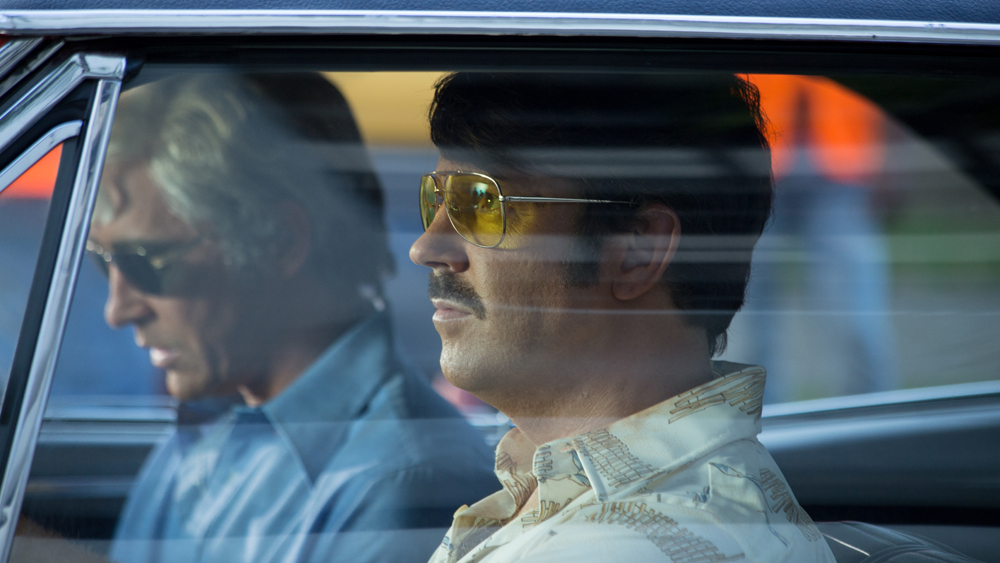Venice Film Review: ‘Driven’
By Guy Lodge
LOS ANGELES (Variety.com) – There was a charged moment, sometime in the early years of this century, when it seemed Lee Pace could become one of America’s major screen actors. A sensitive everyman with a simultaneous, soulful outsider affinity, he made a dazzling debut as a transgender showgirl in “Soldier’s Girl,” but the slide into more workaday roles since then has been steady.
“Driven” is nothing if not workaday: A diverting, color-by-numbers comedy of mad moguls, FBI informants and not-so-fast cars in disco-to-Reagan-era California, Nick Hamm’s loosely fact-based film plays as a good-humored knockoff of Doug Liman’s “American Made” or David O. Russell’s “American Hustle,” without even those films’ Scorsesesque ambitions. Improbably enough, however, it gives Pace a role to echo his earliest, most exciting promise: As disgraced automobile tycoon John DeLorean, he precisely etches an self-unmade man of tightly pinched sorrow, hovering some way above the gaudy hijinks beneath him. As loud and synthetic as its characters’ polyester suits, “” will run up modest theatrical mileage before cruising onto VOD.
If “Driven” rolls happily enough with that disconnect, that’s because DeLorean isn’t its primary interest. Rather, it’s a markedly less remarkable schmuck, drug smuggler turned bumbling FBI mole Jim Hoffman, who’s the nominal hero of this tall-but-kinda-true story. Played with mugging, mustachioed joviality by Jason Sudeikis, Hoffman is that most durable of tragicomic archetypes: the charmed, non-stick dolt who repeatedly slips through situations of far greater consequence than he. Whether that makes him more sympathetic than DeLorean, an evasive genius undone by the scale and egocentricity of his dreams, is open to question, but Colin Bateman’s screenplay largely takes the lesser man’s point of view on their criminal collision course.
As is practically de rigueur with jaunty true-crime whirls of this nature, “Driven” begins somewhere near the end, as Hoffman is walked into a courtroom in a snappy flurry of cuts and glam-rock scoring, while being given officious last-minute coaching by brisk federal agent Benedict J. Tisa (Corey Stoll). The nature of the case, riddled with ambiguities and half-truths, is revealed over a recurring series of flash-forwards. The principal narrative, meanwhile, begins in 1974, when Hoffman, then a cheerfully corrupt pilot, is arrested by Stoll after ferrying enough cocaine to fuel Studio 54 for an entire eon from Bolivia to the U.S., under the guise of a family vacation with his unwitting wife Ellen (Judy Greer, reliably game in a princess-to-patsy part) and kids.
Rather than face 30 years in prison, Hoffman agrees to go undercover as an informant in a long-term scheme to entrap high-rolling sleazebag dealer Hetrick (Michael Cudlitz), while living a life of surface luxury on the government’s payroll in San Diego County’s moneyed Pauma Valley. If this palm-tree paradise looks even lusher than you might expect, that’d be because the film was shot entirely on location in co-producing territory Puerto Rico — amid the recent hurricanes, as it happens, though the final product has emerged looking sleek and permatanned from its production woes.
As if he weren’t sufficiently out of his depth on millionaire’s row, engine nerd Hoffman is astonished to find himself living across the road from John DeLorean, recently departed from his name-making stint at General Motors and dreaming up the unreliable, wing-doored sports car that “Back to the Future” would eventually make immortal.
The two men gradually become friends if never equals: Julia Michelle Santiago’s amusingly kitschtacular costume design is particularly effective in marking the insurmountable differences in class and classiness between the two, even as they’re decked out in equally flammable fabrics. (One particularly keen-eyed detail sees Hoffman’s square white wifebeater showing all too plainly under a flimsy yellow party shirt.) But while Hoffman, all too eager for distraction from his FBI grunt work, is content to be DeLorean’s charity-case drudge, the visionary engineer has a riskier purpose in mind for him when cash-flow problems strike his fledgling car company — one that also serves the feds’ interests rather neatly.
Working in spryer mode than in 2016’s Irish political biopic “The Journey,” Hamm handles the ensuing zigs and zags of Bateman’s smart-aleck script with well-oiled efficiency, though few surprises are uncovered in either the material or its presentation: every shot, cut and Now That’s What I Call Disco song cue lands exactly where you expect it to. Sudeikis’ generally engaging glibness sets the tone for the action, which is what the strange, spiritually blighted softness of Pace’s DeLorean works so intriguingly against.
Even at the character’s most smarmily confident, the actor’s willowy body language and lightly sandpapered voice lends DeLorean a disquieting aura of forthcoming tragedy that he’s already somehow accepted — a sense, if you will, that where he and his business are ultimately going, he won’t need roads. Against the film’s own boisterous inclinations, Pace gives it something like a heart, albeit a closed, melancholic one: that’s some acting, and it’s maybe more than these agreeably derivative proceedings deserve. Like its less interesting chancer of a protagonist, however, “Driven” will take what brushes with greatness it can get.

